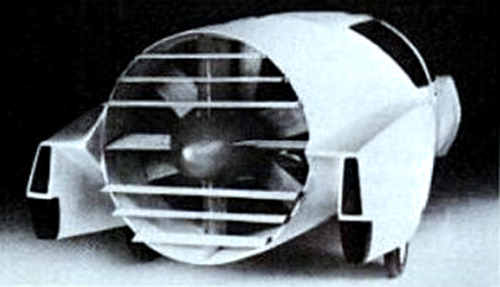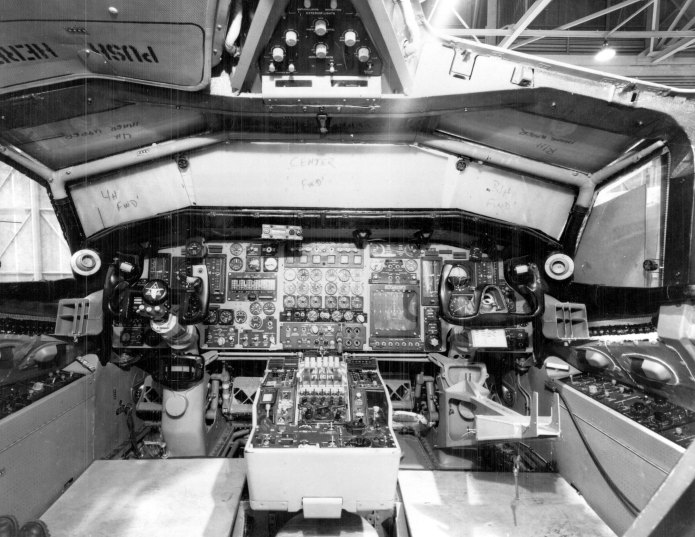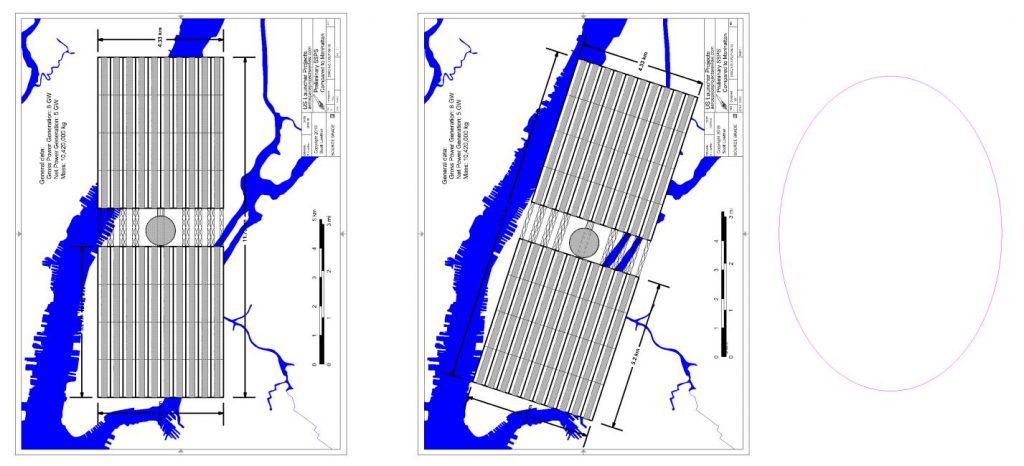Jim Bede was a prolific designer of what he hoped would be low-cost “kit” airplanes that would make aviation available to regular folks. But due to designs with an unfortunate habit of crashing and a lot of business difficulty, his designs are pretty rare in the air. His most famous design is doubtless the BD-5, a tiny single-seat high performance pusher design. The BD-5J replaced the pusher prop and piston engine with a small turbojet, and was made famous in the opening sequence of the James Bond movie “Octopussy.”
Like a lot of aircraft designers, Bede tried his hand at other things. In 1981 he designed the “Bede Car,” an automobile with a ducted pusher propeller. The performance claims were pretty spectacular… 120 miles per gallon with a respectable top speed of over 100 miles per hour.



It clearly looks cool. And ground vehicles with propellers certainly work; the Russians have been building “aerosani” fitted with skis rather than wheels for operation on vast tracks of snow and ice for more than a century. There was also the 1932 Helicron, a prototype car with a propeller at the front. it worked, but is certainly a terrifying concept as anything you might hit (other cars, pedestrians, deer, etc.) will get chopped to bits.
But the problem with the Bede Car was that it just didn’t work as advertised. The fuel economy was apparently estimated based purely on engine performance, without taking into account the effects of the drag of the actual car and performance losses due to the terribly non-optimized inlets. Worse, at low speed you’re basically taxiing, and that’s not a good way to handle low speed. Vehicles powered by propellers have an advantage in that the wheels and tires are not subjected to the same stresses they would be if the wheels were hooked up to a drive train. But the down side is that you don;t have the mechanical advantage of the wheels shoving against the road. So propeller cars *suck* are going up hill, especially at low speed. If you want to simply drive over speed bumps in a parking lot, you’ll have to go full throttle and hit them at speed, or you’re SOL. Even at low speed, you will be putting out substantial thrust, making you something of a hazard to anyone behind you. Acceleration is likely to kinda stink.
Consequently, the Bede Car vanished. The prototype itself seems to be missing.
All that said, I do wonder about the possibility of a modern version. The performance issues of low speed and up hill are not going to go away just because you use new carbon fiber structures; these issues are inherent to the concept. So, how to deal with them? One seemingly simple solution: use electric motors to directly power the wheels at low speed and while going up hill. The motors would only need to be sized fr low speed, perhaps up to 40 miles per hour or so. And since you already have an electrical drive system, use an electric motor to drive the prop as well.
Propeller cars clearly don’t like being *heavy* cars. So until battery technology improves energy per mass by a factor of five or ten, provide electrical power with a relatively small bank of batteries. These should of course be plug-in. But for long distance trips – and obviously a vehicle like this will be best when it’s going fast on a straight road such as an interstate – use a chemically fueled generator. Since this is derived from airplane tech, why not use a small turboshaft engine? This little turbojet could be incredibly efficient since it would be used solely to drive the generator, and would run at only one speed – the optimum speed for maximum performance. Noise would be the worst problem; tiny turbojets spin at hundreds of thousands of brain-melting RPM. But a turboshaft engine would allow the drive to fill the tank with a wide range of flammable liquid fuels.
Modern design tools should make the inlet and propulsion system more efficient.
Safety features such as a rear bumper would seem to be called for.





